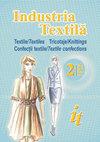设计师在可持续时装方面的潜力:系统文献综述
IF 0.9
4区 工程技术
Q3 MATERIALS SCIENCE, TEXTILES
引用次数: 0
摘要
鉴于环境污染、资源浪费和产业循环阻塞等不可持续的问题,服装行业一直在寻求以线性经济为主导的可持续发展创新。循环经济(CE)主张闭合和修正物质和能源循环,最大限度地减少资源进入和浪费,改善排放和能耗。在现有的循环经济模式下,大多数做法都是针对结果,而不是理解源头。作为服装行业最关键的参与者之一,设计师了解产品开发的源头。本文通过系统的文献综述,总结了服装行业向消费电子转型过程中现有的可持续设计实践(SDPs)。通过对可持续设计实践与产品开发过程(PDP)和生产过程(PP)之间的相关性研究和数据分析,探讨了设计师在可持续设计实践中的参与程度。此外,还通过定性分析讨论了设计师在服装行业内为 CE 转型做出可持续贡献的潜力。研究结果表明,设计师很少参与生产过程,他们在服装行业的发言权有限,而且设计师有可能更多地参与产品开发过程。因此,本研究只关注设计师主导的生产发展计划的可持续发展潜力。最后,还介绍了将 PDP 三维可视化作为设计师主导的 SDP 的潜力和局限性。本文章由计算机程序翻译,如有差异,请以英文原文为准。
Designers’ potential in sustainable fashion: a systematic literature review
Given the unsustainable issues of environmental pollution, resource waste, and industrial cycle blockage, the garment industry, has sought an innovation for sustainable development led by the linear economy. The circular economy (CE) advocates closing and correcting material and energy circuits, minimising resource entry and waste, and improving emissions and energy consumption. Most practices under the existing CE model address the outcome rather than comprehending the source. As one of the most critical players in the apparel industry, designers understand the source of product development. In this paper, existing sustainable design practices (SDPs) in the transition of the apparel industry to CE were summarised through a systematic literature review. The extent of designers’ involvement in CE was explored through a correlation study and data analysis between SDPs and the processes of product development (PDP) and production process (PP). Furthermore, the designers’ potential to contribute sustainably to the CE transformation within the apparel industry was discussed via qualitative analysis. The findings demonstrated infrequent involvement in PP by designers, whose voices were limited in the apparel industry, and that the possibility of more designer involvement in SDP. Therefore, this research only focused on the sustainability potential of designer-led PDPs. Lastly, the potential and limitations of applying PDP three-dimensional visualisation as a designer-led SDP were presented.
求助全文
通过发布文献求助,成功后即可免费获取论文全文。
去求助
来源期刊

Industria Textila
工程技术-材料科学:纺织
CiteScore
1.80
自引率
14.30%
发文量
81
审稿时长
3.5 months
期刊介绍:
Industria Textila journal is addressed to university and research specialists, to companies active in the textiles and clothing sector and to the related sectors users of textile products with a technical purpose.
 求助内容:
求助内容: 应助结果提醒方式:
应助结果提醒方式:


